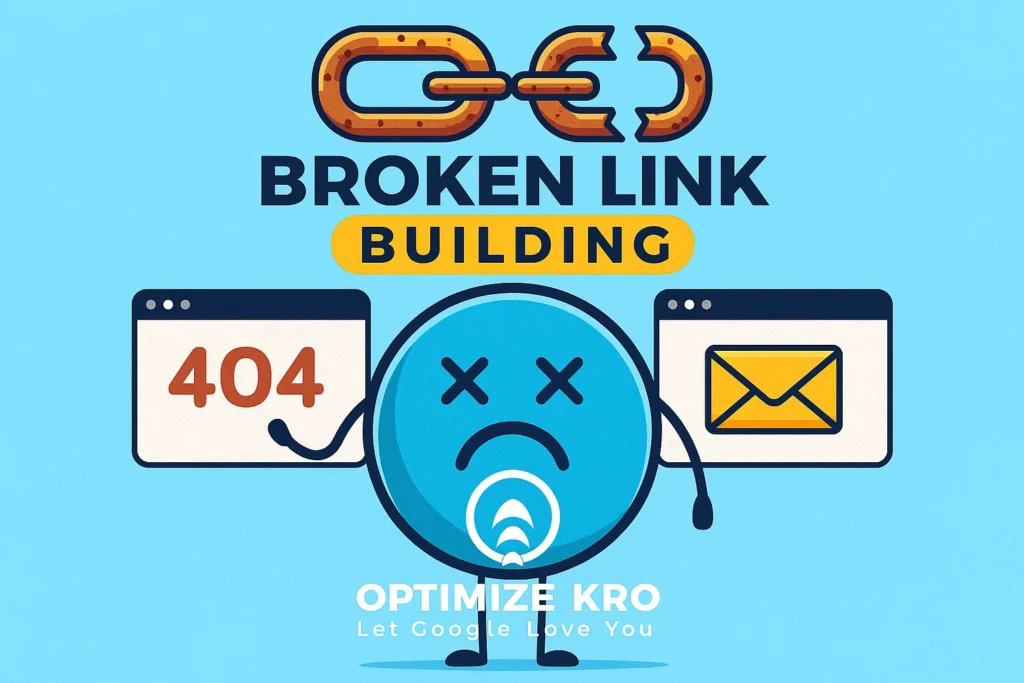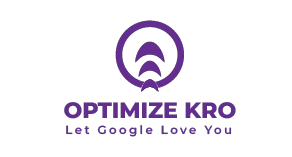Broken link building is a white-hat SEO technique in Off-Page SEO where webmasters and marketers find broken links on websites and then suggest their own relevant content as a replacement. This is beneficial both for the website owner (who fixes a broken link) and for the SEO professional (who gets a backlink). It’s a highly effective strategy for increasing traffic, improving your site’s SEO, and gaining valuable backlinks.
In this guide, we will delve into the step-by-step process of broken link building, providing actionable strategies, FAQs, tips, and best practices to help you implement this technique and achieve long-term SEO success.
Table of Contents
- What is Broken Link Building?
- Why Is Broken Link Building Important for SEO?
- How Broken Link Building Works
- Step-by-Step Guide to Broken Link Building
- Step 1: Find Broken Links
- Step 2: Create or Find Relevant Content
- Step 3: Reach Out to Website Owners
- Step 4: Follow Up
- Best Tools for Broken Link Building
- Ahrefs
- Screaming Frog
- Broken Link Checker
- Google Search Console
- Common Mistakes to Avoid in Broken Link Building
- Benefits of Broken Link Building
- FAQs
- Conclusion
1. What is Broken Link Building?
Broken link building refers to the process of finding broken (404) links on external websites and suggesting your own content as a replacement. These broken links can happen for various reasons, such as the original content being removed or a URL changing. By identifying these links and notifying the site owner, you can offer a solution by recommending your own relevant resource.

This strategy is particularly effective because it offers value to the website owner: fixing broken links on their site helps with user experience and SEO. In exchange, they may link to your content, thereby boosting your website’s authority and ranking in search engines.
2. Why Is Broken Link Building Important for SEO?
Broken link building offers several SEO benefits:
1. Improves Your Website’s Authority
By securing backlinks from high-authority websites, you enhance your domain’s authority and credibility, which improves your overall SEO performance.
2. Boosts Organic Traffic
Gaining quality backlinks through broken link building helps your site rank higher on search engine results pages (SERPs), leading to more organic traffic.
3. Helps Fix Broken Links for Website Owners
Many site owners may not even know they have broken links. By notifying them, you provide a helpful service that can improve their site’s user experience and SEO.
4. Enhances Relationships
The outreach involved in broken link building can help build strong relationships with industry leaders, influencers, and other website owners.
3. How Broken Link Building Works
Here’s a simplified breakdown of the broken link building process:
- Identify Broken Links: Search for websites that have broken or dead links.
- Suggest Replacement Content: Once you find a broken link, identify your relevant content that can serve as a good replacement.
- Contact the Site Owner: Reach out to the site owner or webmaster, informing them of the broken link and suggesting your content as an alternative.
- Secure a Backlink: If the site owner agrees, they’ll replace the broken link with your content, granting you a valuable backlink.
4. Step-by-Step Guide to Broken Link Building
Step 1: Find Broken Links
The first step is identifying broken links on relevant websites in your niche. This can be done manually by going through pages or by using tools that automate the process.
Step 2: Create or Find Relevant Content
Once you identify a broken link, create content that is similar or better than the original link. If you already have content that fits, then you can use that as a suggestion.
Step 3: Reach Out to Website Owners
Now that you’ve identified broken links and created relevant content, the next step is outreach. Craft a polite email to the site owner or webmaster. Here’s an example:
Subject: Broken Link on [Website Name]
Body:
Hi [Name],
I hope you’re doing well. I came across your website while researching resources for [Topic], and I noticed that the link on your page [URL of the broken link] is broken.
I wanted to let you know about it, and as a possible solution, I thought you might find my article [Your Link] helpful as a replacement. It covers [Topic] in detail and may provide value to your visitors.
Thanks for your time, and I hope this helps!
Best regards,
[Your Name]
Step 4: Follow Up
Don’t hesitate to follow up if you don’t get a response within a week or two. Be polite and courteous in your follow-up, reminding them about the broken link and the content you offered as a solution.
5. Best Tools for Broken Link Building
Here are some of the best tools you can use to identify broken links and streamline the broken link building process.
1. Ahrefs
Ahrefs is a powerful tool for SEO analysis and broken link building. It has a comprehensive backlink analysis feature, which helps you find broken links and opportunities for outreach.
2. Screaming Frog
Screaming Frog is a website crawler that helps you identify broken links on any website. It is a very effective tool for detailed link analysis and link audit.
3. Broken Link Checker
A simple tool that crawls your site and identifies any broken links. It’s also useful for finding broken external links to build links from.
4. Google Search Console
Google’s own Search Console allows you to monitor the performance of your website, including identifying crawl errors like broken links.
6. Common Mistakes to Avoid in Broken Link Building
1. Ignoring Relevant Content
Always ensure that your content is relevant to the broken link’s topic. If your content doesn’t provide value or isn’t closely related, your outreach will likely be ignored.
What Our Clients Say
Trusted by contractors and local businesses for proven Local SEO Services.
John M. – General Contractor
“These guys transformed my Google Maps ranking. More calls, more local leads, and better visibility!”
Sarah L. – Roofing Business
“Within 3 months, my business went from page 3 to the top 3 listings. Highly recommend their Local SEO service!”
David K. – Plumbing Services
“Affordable and effective SEO. My local service calls doubled in less than 90 days.”
2. Being Too Pushy
Don’t pressure website owners to link to your content. Offer it as a helpful solution and respect their decision if they decline.
3. Not Personalizing Outreach
Avoid using generic templates. Personalize your outreach emails based on the website you’re contacting and the content you’re offering.
4. Overlooking Link Quality
Make sure the site you’re reaching out to has a good domain authority and is a reputable source in your industry. Low-quality links won’t help your SEO.
7. Benefits of Broken Link Building
- Natural Backlinks: Backlinks earned through broken link building are natural and earned, which makes them valuable.
- Improve Website User Experience: By fixing broken links, you also contribute to a better user experience on the website you’re reaching out to.
- Long-Term Results: As you build more backlinks through broken link building, your site’s SEO performance will improve over time, bringing consistent traffic and visibility.
- Niche Relevance: Since you’re targeting websites in your niche, you’ll build highly relevant backlinks that improve your site’s authority in that area.
To find broken links, use tools like Ahrefs, Screaming Frog, or Broken Link Checker. These tools crawl websites and identify any links that are returning 404 errors.
No, broken link building is a white-hat technique and won’t harm your SEO if done correctly. In fact, it can significantly boost your website’s SEO when done right.
There’s no specific number, but focusing on high-quality websites with multiple broken links will increase your chances of success.
It can be time-consuming, especially in the beginning. However, the long-term SEO benefits are worth the effort.
Write a concise and polite email. Point out the broken link and offer your content as a helpful alternative. Be courteous and professional.
9. Conclusion
Broken link building is a powerful technique that helps both you and website owners by improving SEO, fixing broken links, and gaining backlinks. By following the outlined steps, using the best tools, and avoiding common mistakes, you can effectively implement this strategy to increase your site’s authority and organic traffic.

Gulfam Qamar is a seasoned Local SEO expert with a proven track record of helping businesses boost their online visibility and dominate local search results. With deep expertise in Google Business Profiles, on-page optimization, and local citation strategies, Gulfam helps brands connect with nearby customers and grow sustainably. When he’s not optimizing websites, he’s sharing actionable SEO tips and insights to empower small businesses in the digital space.

